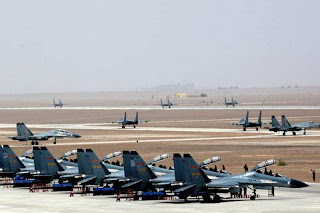 It is unlikely that Beijing would carelessly violate the median line in the Taiwan Strait. A number of hypotheses help explain why it did
It is unlikely that Beijing would carelessly violate the median line in the Taiwan Strait. A number of hypotheses help explain why it didAlthough the Ministry of National Defense and some Chinese Nationalist Party (KMT) legislators played down the significance of an incident involving two Chinese fighter aircraft in the Taiwan Strait late last month, analysts say the matter is more than simply routine.
Confirming on Monday media reports that one of two Chinese Sukhoi-27 (Su-27) fighter aircraft shadowing a US U-2 spy plane had crossed the median line in the Taiwan Strait on June 29, ministry officials maintained this was an isolated incident and did not regard it as provocative.
The Chinese aircraft are believed to have been from the 40th Fighter Regiment, 14th Fighter Division at Nanchang-Xiangtang Air Base in Jiangxi Province.
Although the intrusion — reportedly the first since an April 1, 2001, mid-air collision between a US Navy EP-3 aircraft and a Chinese J-8 fighter — prompted the ministry to dispatch two F-16s to intercept the Chinese fighters, KMT legislators said Beijing would not seek to provoke Taiwan at a time when relations in the Taiwan Strait are “at their best in decades.”
KMT Legislator Herman Shuai (帥化民) said the incident was the result of pilot error.
My analysis, published today in the Taipei Times, continues here, with comments by the US Department of Defense, PACOM, Roger Cliff and Gary Li. My take on the incident for JDW can be accessed here (subscription required).























